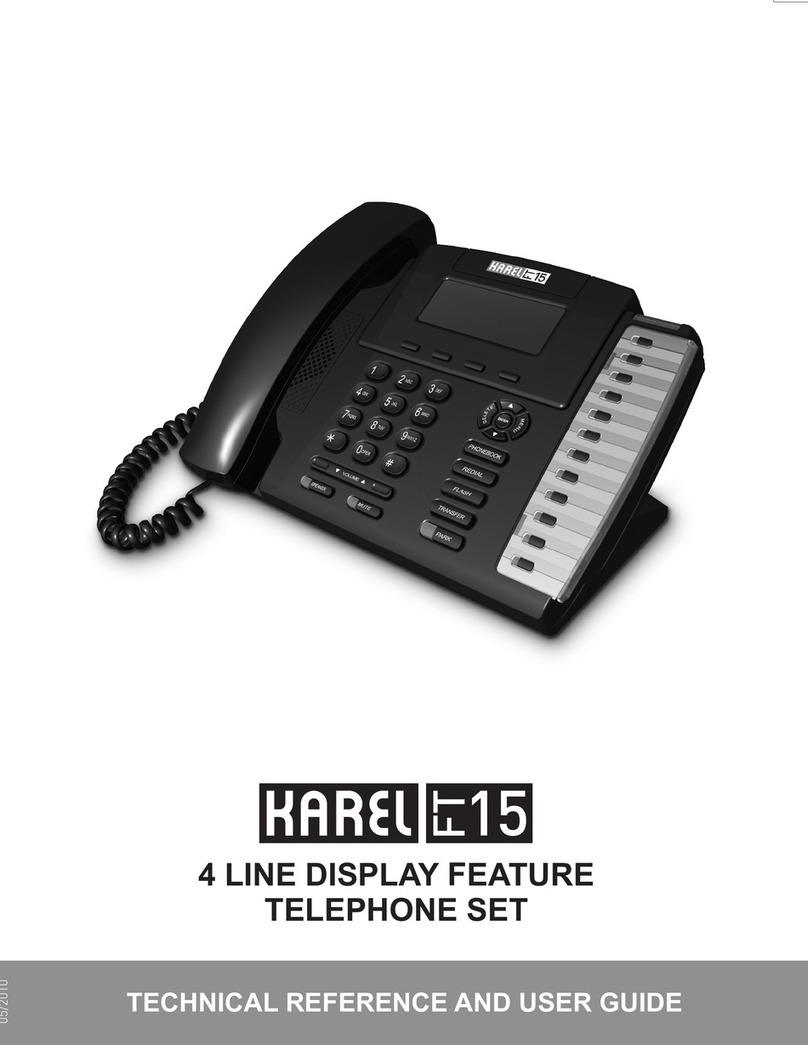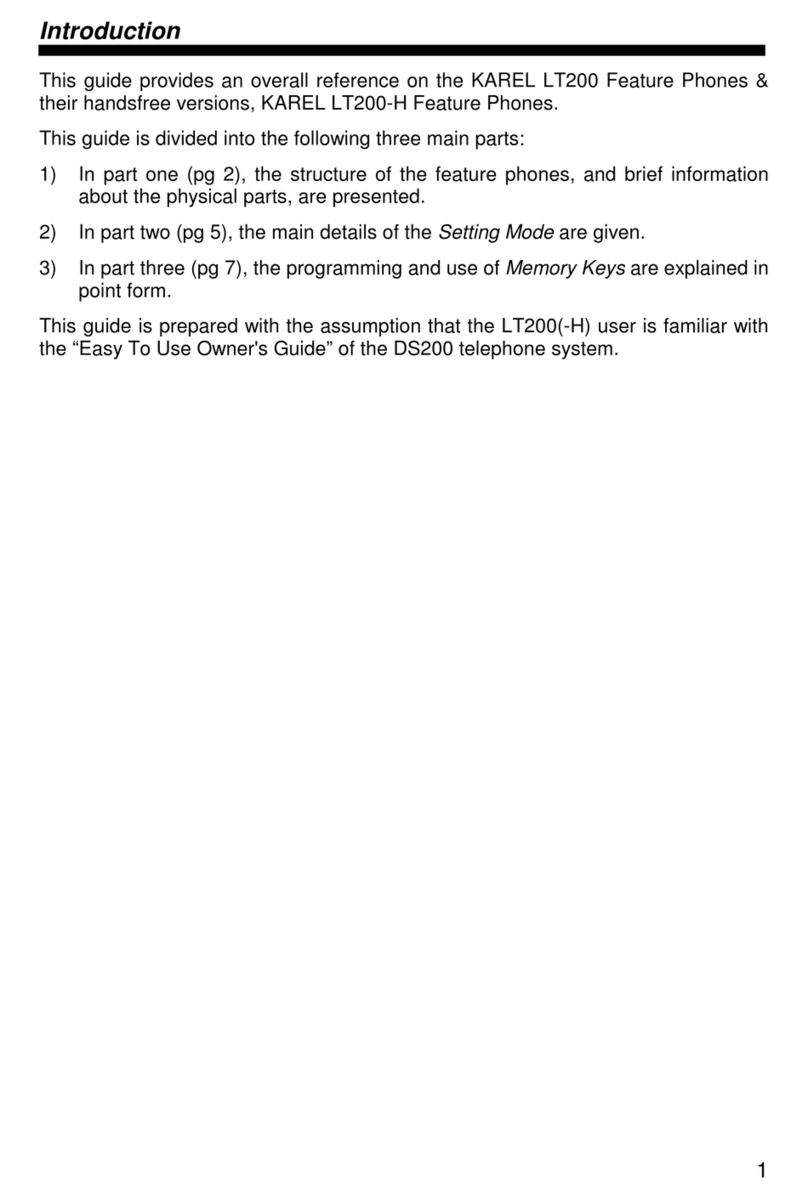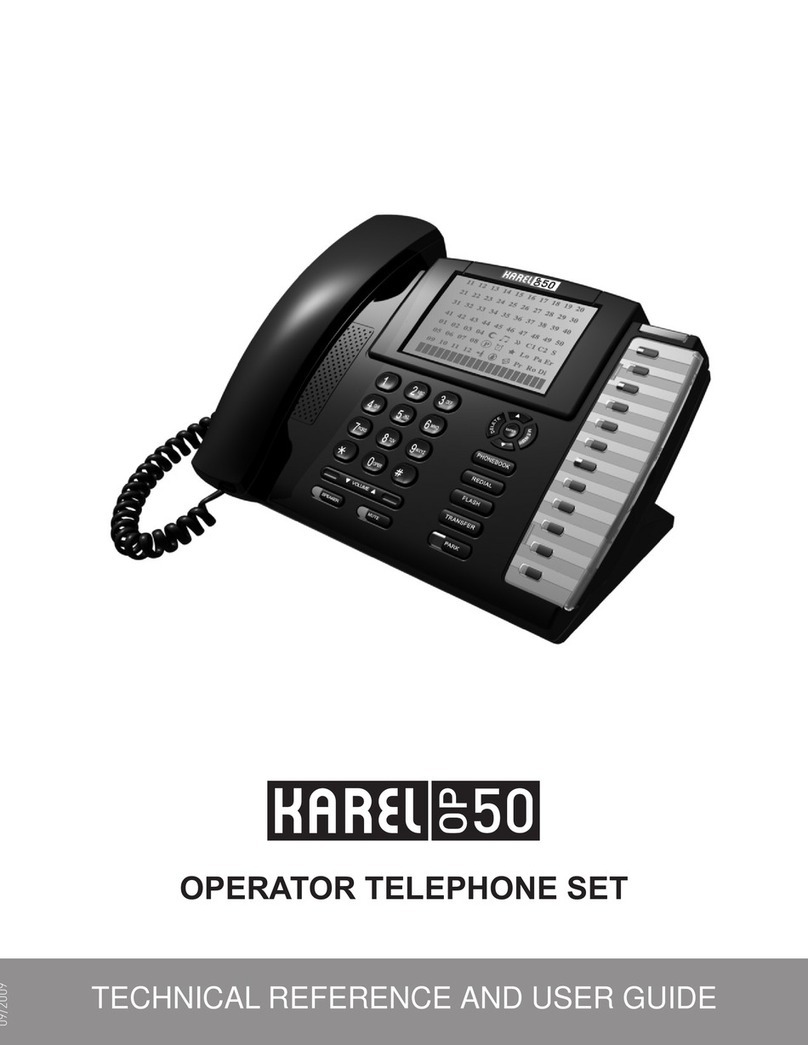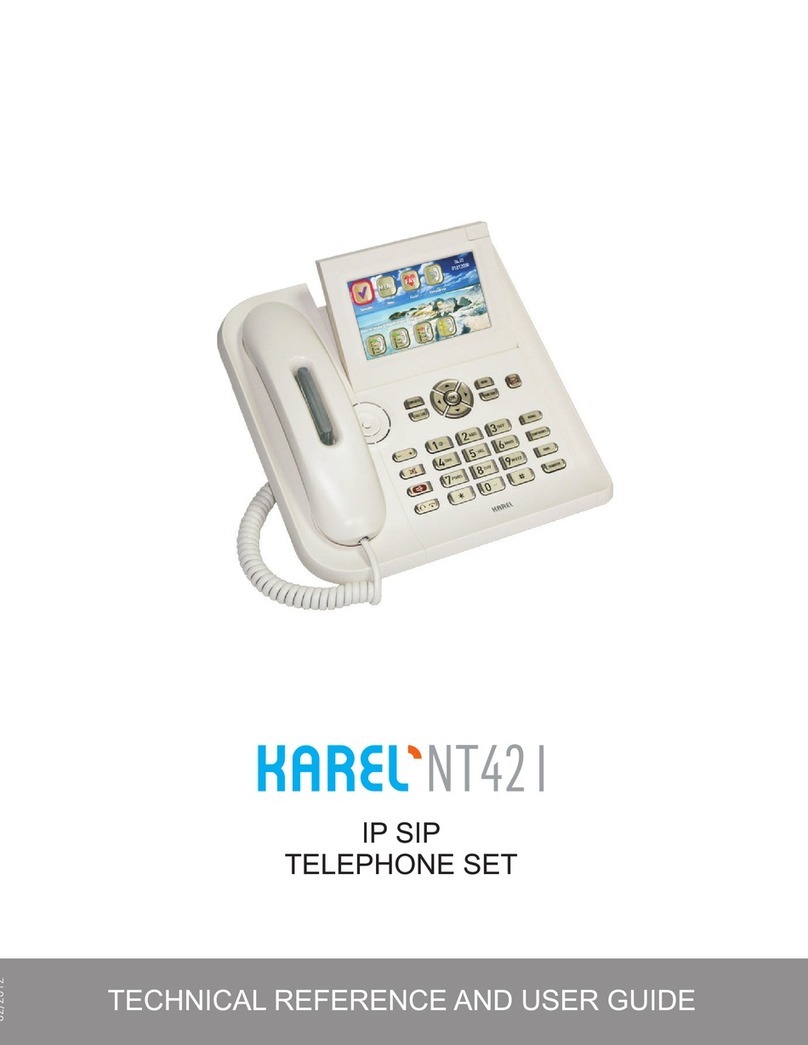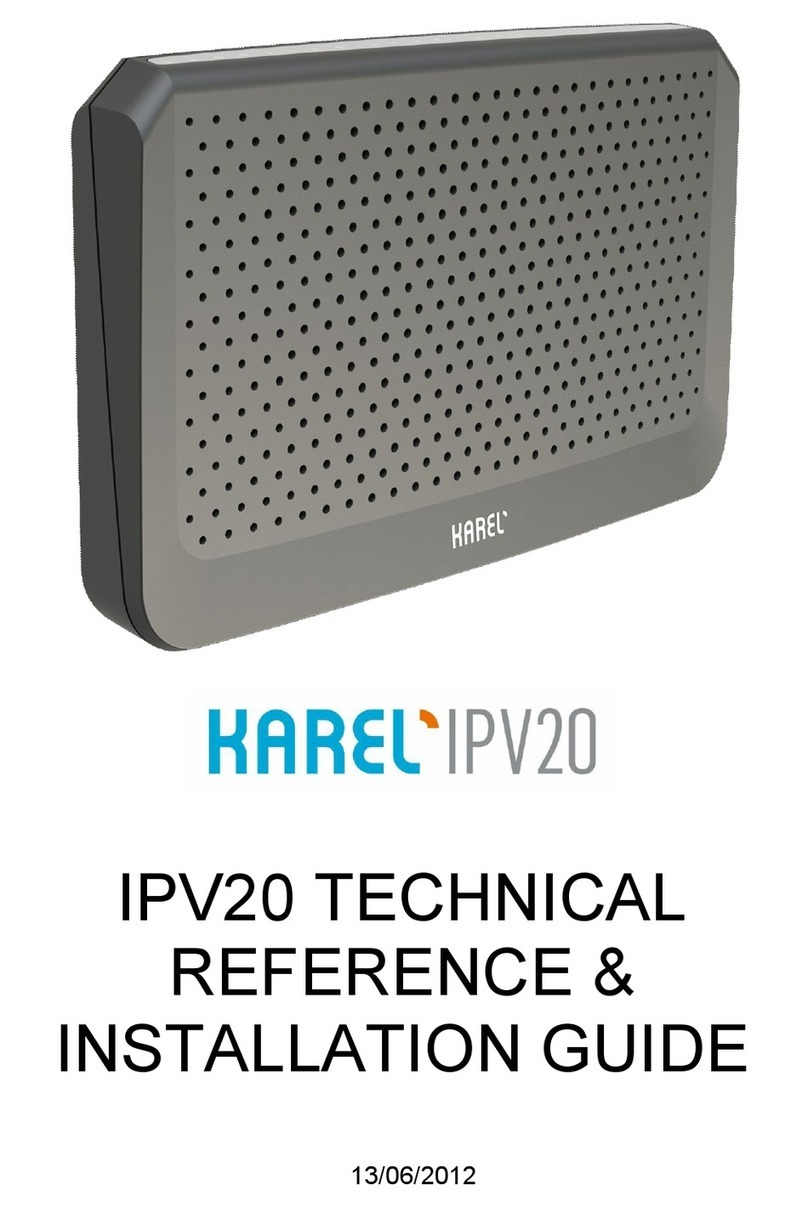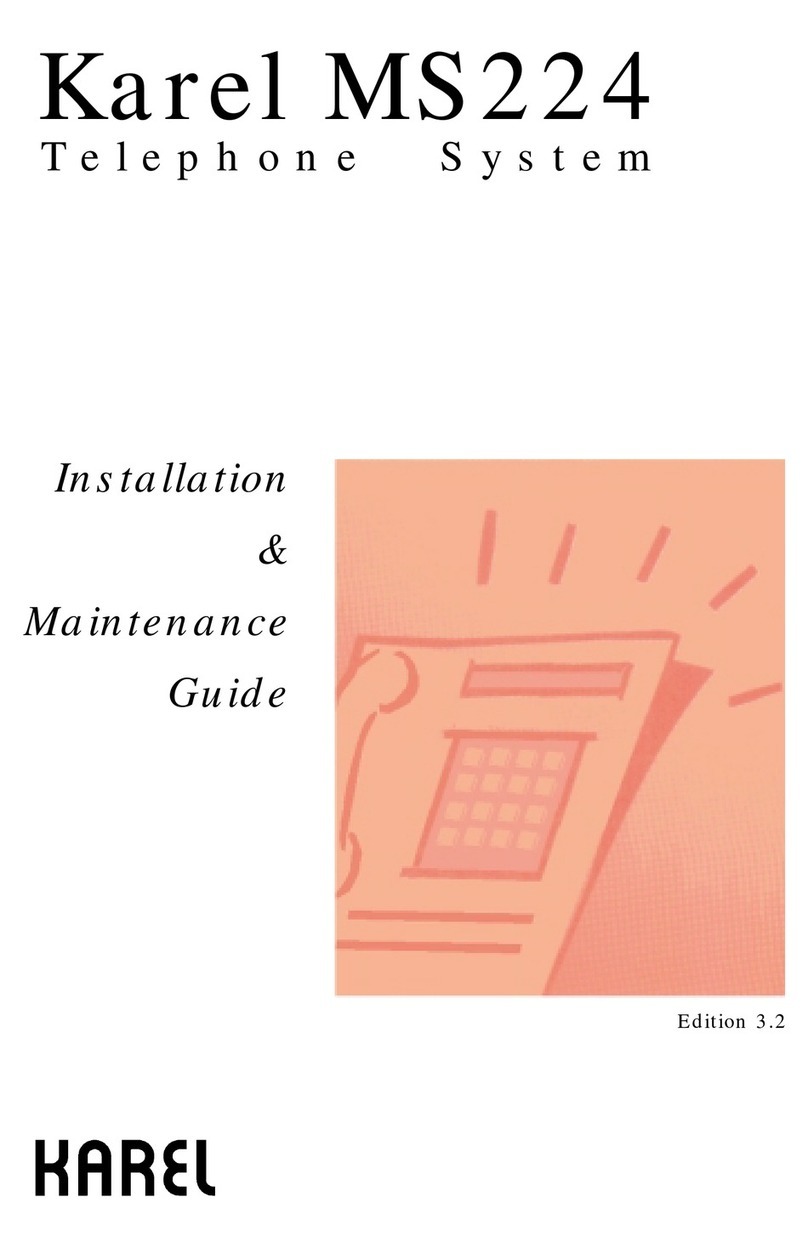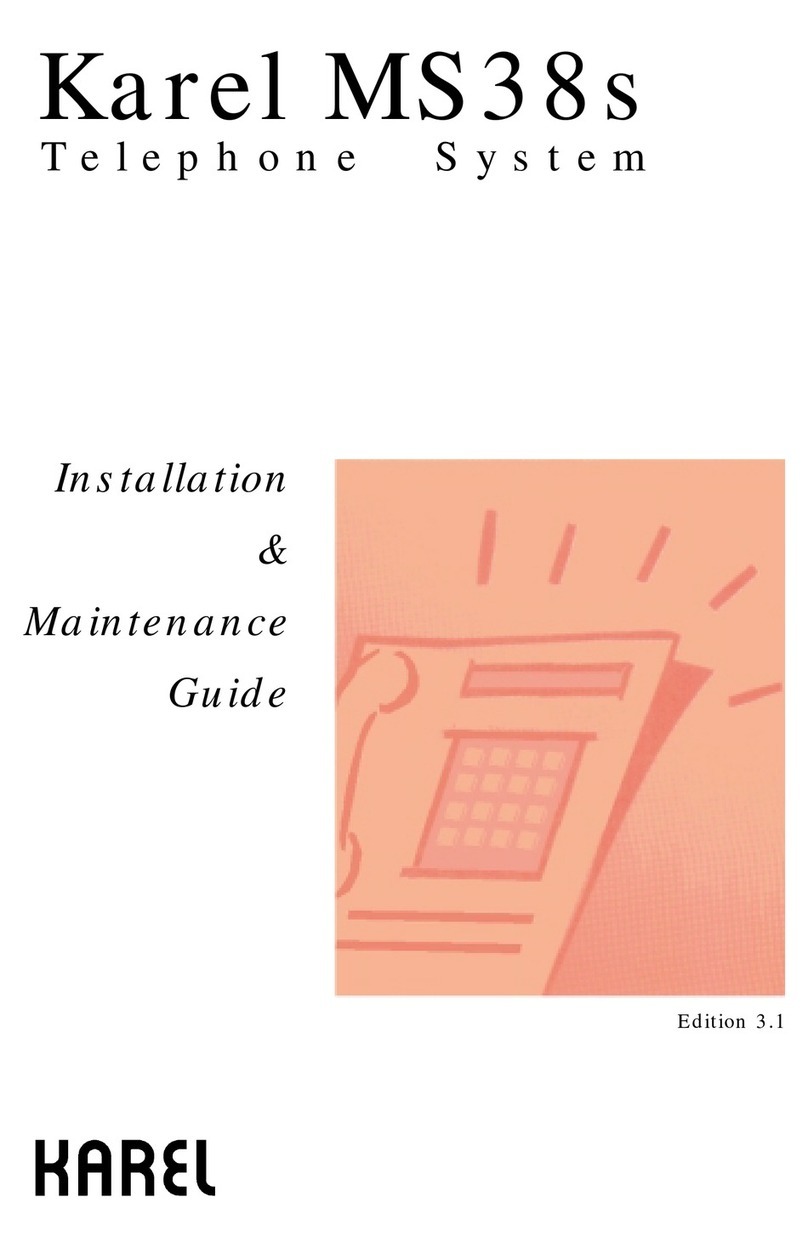Karel MS48 Installation & Maintenance Guide
Edition 3.2
6
The MB48 motherboard has 4 lines and 12 extensions, constructing the basic
capacity of the system. However, this capacity may be further increased by means
of EXP48 Expansion Modules.
There are 3 types of EXP48 Expansion Modules :
• EXP48 (4/12) Expansion Module with a capacity of 4/12.
• EXP48 (0/16) Expansion Module with a capacity of 0/16.
• EXP48 (2/6) Expansion Module with a capacity of 2/6.
At most two EXP48 Expansion Modules of any type can be installed on top of the
MB48 motherboard except for both being EXP48 (0/16) or EXP48 (2/6), so that
MS48 system supports the following capacities :
Lines Extensions
4 28
18
6 34
24
8 40
10 30
12 36
The default numbering plan of MS48 system depends on the system capacity as
follows :
• For capacities (4/12) and (6/18), the extensions have numbers 11 to 22
and 11 to 28, whereas the lines have numbers 01 to 04 and 01 to 06,
respectively.
• For higher capacities, the extensions have three digit numbers, and the
numbering of the lines is similar to the lower capacities. So, the
extensions have numbers from 111 to 150 (max.) and the lines have
numbers from 01 to 12 (max.).
When all the modules are installed and the system is powered on, the system
checks and recognizes all the cards automatically and arranges the numbering
plan accordingly.
Other than the extension circuitries that exist on all EXP48 modules and the line
circuitries that exist on all EXP48 modules except for EXP48 (0/16), there are also
utility and switching circuitries on EXP48 Expansion Modules. See the following
figures for the location of these circuitries, noting that the extension and line
numbers are assigned with the assumption that the related EXP48 module is the
first card installed on top of the MB48 motherboard.
